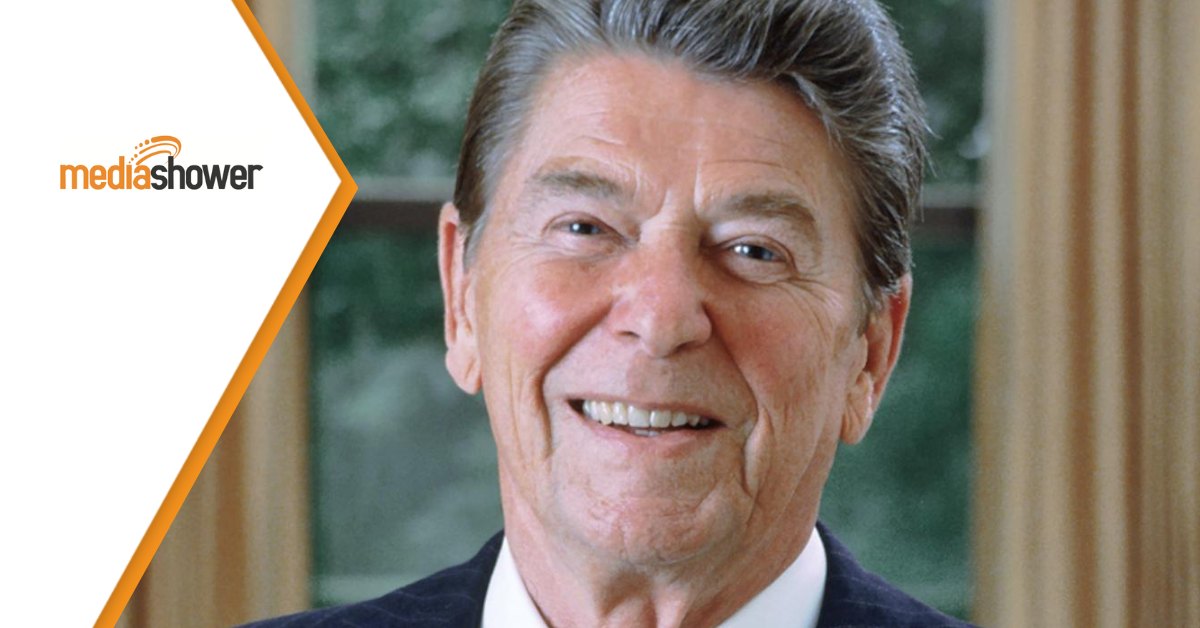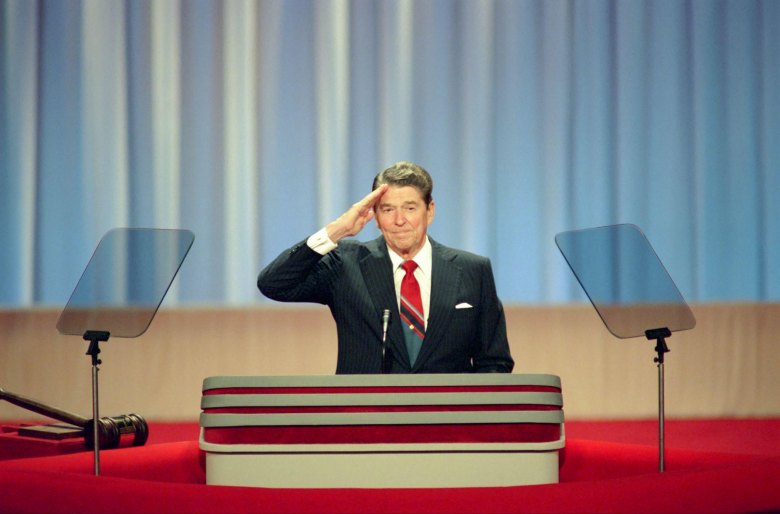
Ronald Reagan’s acceptance address at the 1980 Republican National Convention stands as a seminal moment in American political history, heralding the onset of a new conservative era.
Reagan’s address called for a restoration of American confidence and a return to the country’s foundational principles. He advocated for tax cuts to stimulate economic growth, a strategy that would later be known as “Reaganomics.” The speech is credited with galvanizing the conservative movement in the United States, leading to Reagan’s landslide victory in the 1980 presidential election against the incumbent, Jimmy Carter.
Reagan demonstrates his rhetorical chops throughout the speech, showing us that lyricism, repetition, and inspiring language provoke emotion and action in an audience. Here’s what today’s communicators can learn — from both sides of the aisle.
Use Rhetorical Questions
Rhetorical questions are one of the most common techniques used by great communicators. In short, rhetorical questions are asked without expecting an answer, typically because it is understood that we all agree on the general answer.
Reagan used this device to invite the convention to fill in gaps for him:
“Can anyone look at the record of this Administration and say, ‘Well done’?
Can anyone compare the state of our economy when the Carter Administration took office with where we are today and say, ‘Keep up the good work’?
Can anyone look at our reduced standing today and say, ‘Let’s have four more years of this’?”
Using these techniques, Reagan doesn’t have to say, “Things are going badly.” He simply allows the audience to fill that gap for him.
In marketing and advertising, rhetorical questions are a lead that connects us with our audience. They’re a powerful way to ask the reader to identify with a message rather than simply telling them that message.
Furthermore, getting an audience to identify this way creates a deeper relationship between you, the audience, and the brand. They’re less aggressive and more inviting and open space for consideration.
Use Powerful Repetition

With his training as an actor, Reagan was always well-known as an orator. Much of that was his handling of language, lyricism, and human connection. This is no more evident than in his use of repeated language to connect ideas and create momentum.
In rhetoric, this is called anaphora. Anaphora is often employed in speeches, poetry, and prose to strengthen an argument or narrative’s emotional appeal. It can unify a series of points, intensify a call to action, or highlight a theme or concern. Repetition is a powerful tool for emphasizing an idea’s importance, and reinforcing the overall message.
For example, Reagan uses the words “we must” throughout:
“We must overcome something the present administration has cooked up…”
“We must not waste energy…”
“We must have the clarity of vision…”
“We must halt this fiscal self-destruction…”
This creates a call to action, a call to concrete steps where change is necessary. There is clarity in this approach to communication.
In other places, Reagan continuously calls on “belief”:
“I believe the American people are going to answer these questions…”
“We also believe it is essential…”
“I believe it is clear our federal government…”
“I believe that this generation of Americans today has a rendezvous with destiny.”
Reagan strongly connected with American myth and identity—his repeated use of “belief” called upon higher ideals, rejecting the status quo.
Finally, Reagan includes repetition in subtle ways to build to a crescendo:
“Some say that spirit no longer exists. But I have seen it–I have felt it–all across the land … the American spirit is still there, ready to blaze into life if you and I are willing to do what has to be done….
The time is now to resolve that the basis of a firm and principled foreign policy is one that takes the world as it is and seeks to change it by leadership and example; not by harangue, harassment, or wishful thinking.
The time is now to say that while we shall seek new friendships and expand and improve others, we shall not do so by breaking our word or casting aside old friends and allies.
And, the time is now to redeem promises once made to the American people by another candidate, in another time and another place.”
By repeating “the time is now,” Reagan creates an imperative rooted in American idealism that resonates with his audience.
In our data-driven marketing landscape, we often lose sight of the magic of language. Reagan’s skillful use of repetition teaches us that to truly connect and make an impact, we don’t always need complex language or the latest tools. Simple, repeated messages can be the most powerful way to communicate.
Marketer’s Takeaway
Reagan’s speech is a masterclass in powerful communication. As marketers and communicators, the essence of engagement lies in how well we connect with our audience’s core beliefs and values.
Reagan’s adept use of rhetorical questions and anaphora—repetition of a word or phrase at the beginning of successive clauses—demonstrates a powerful method to engage and mobilize an audience.
Rhetorical questions serve as an invitation for the audience to engage with the speaker’s line of thinking, creating a shared space for reflection and agreement. This approach is less about in-your-face persuasion and more about guiding the audience to a conclusion they feel they’ve reached independently.
Reagan’s strategic repetition, particularly his use of “we must” and “I believe,” functions not just as a linguistic technique but as a tool for building solidarity and action. Each repetition acts as a call to arms, rallying the audience around common goals and shared beliefs.
For marketers, the ability to use language that resonates, repeats, and reinforces can make the difference between being heard and being overlooked. Reagan’s use of simple, powerful messages, structured through repetition and strategic questioning, illustrates the timeless value of connecting on a human level.
Media Shower has helped over 500 clients master their brand communication. Click to get a free trial of the Media Shower platform and learn more.